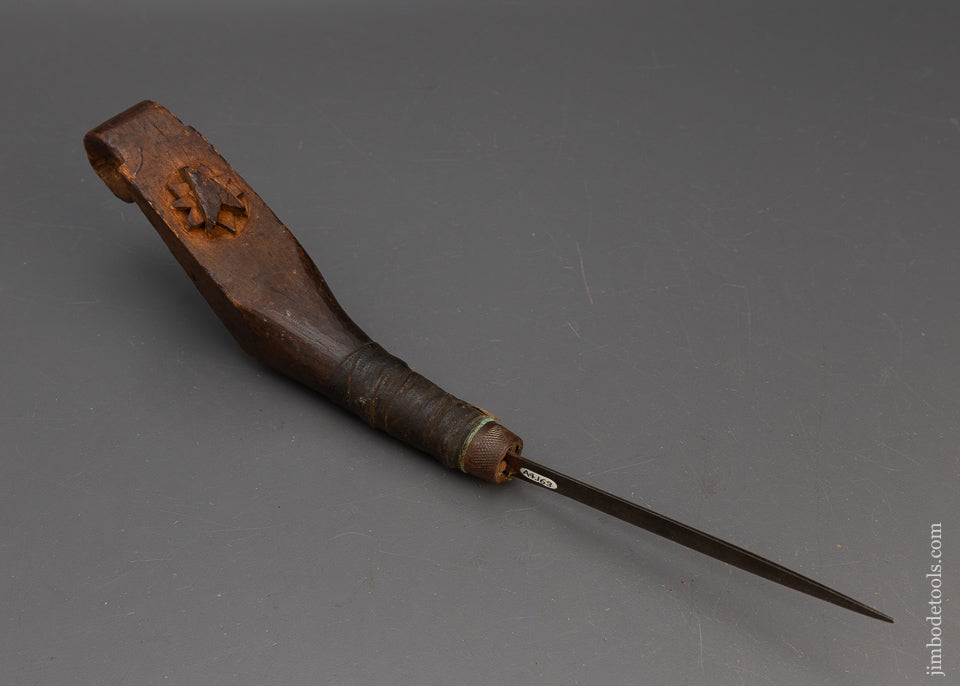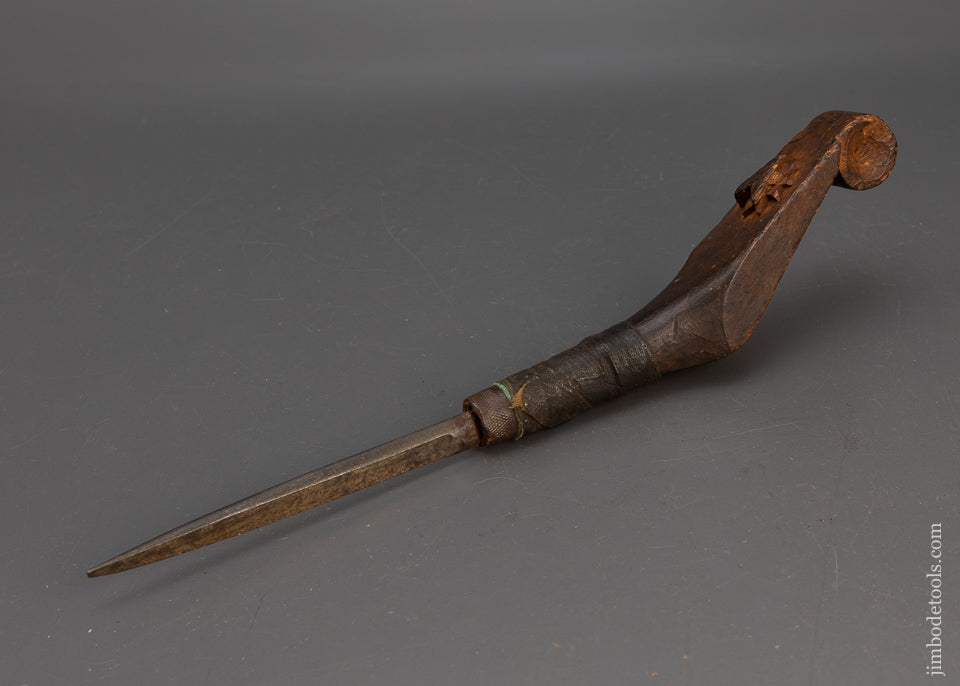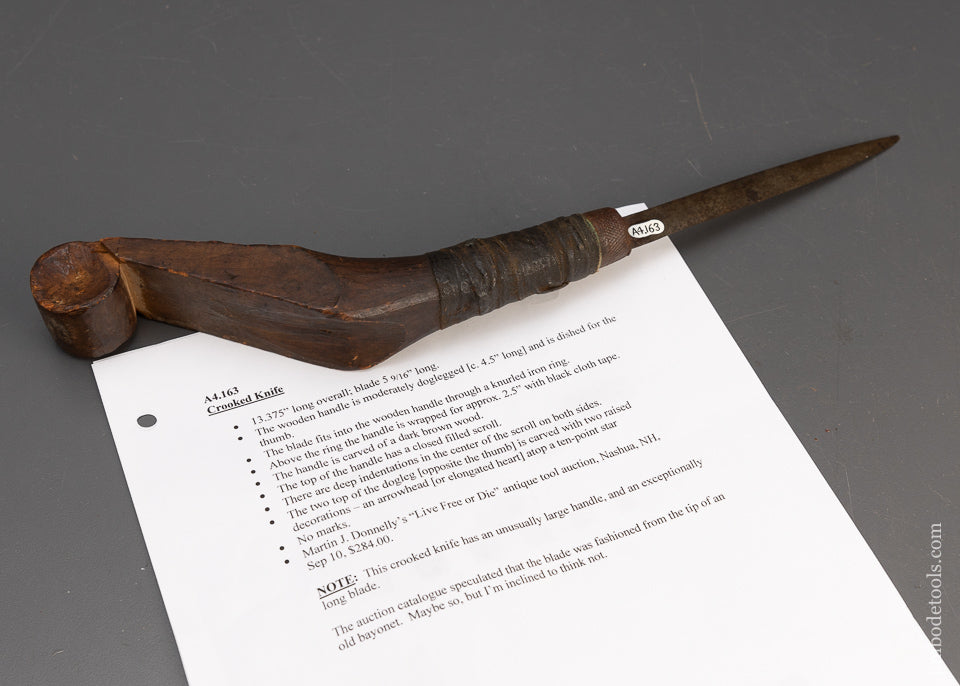13 1/4 inches long. The origin of the crooked knife dates back to the 17th century North America. Henry David Thoreau wrote in 1848 "I suspect that it was made according to an aboriginal pattern" referring to a crooked knife being used by an Indian to fashion a canoe paddle. He had reported that he had seen other native Americans as well as white woodsmen using them. The crooked knife was used in the wilderness as a lightweight one handed drawknife. A tool that could accomplish almost any woodworking need. These knives were generally made by Native Americans and used by loggers as one hand drawshaves for axe handles, etc. Woodland Indian/Northeastern Woodlands carved or inspired mocotaugan (the knife) or crooked knives as they are known more commonly, were an indispensable survival tool. They are known as one of the most significant of all material objects known today from the history of native North Americans. More than 60 native tribes occupied the woodlands when Europeans first arrived thus these knives are known by many names and subject to design variations. The Penobscot had at least four names for these knives, while the Micmac used the word, "Wahawknigan". Captain John Gyles, writing of his captivity about 1696 by the Maliseet Indians in Maine observed, "the crooked knife was part of every man’s equipment”. Part of a collection of over 100 crooked knives we have obtained and will be posting daily for months to come.
- Gallery
- Description
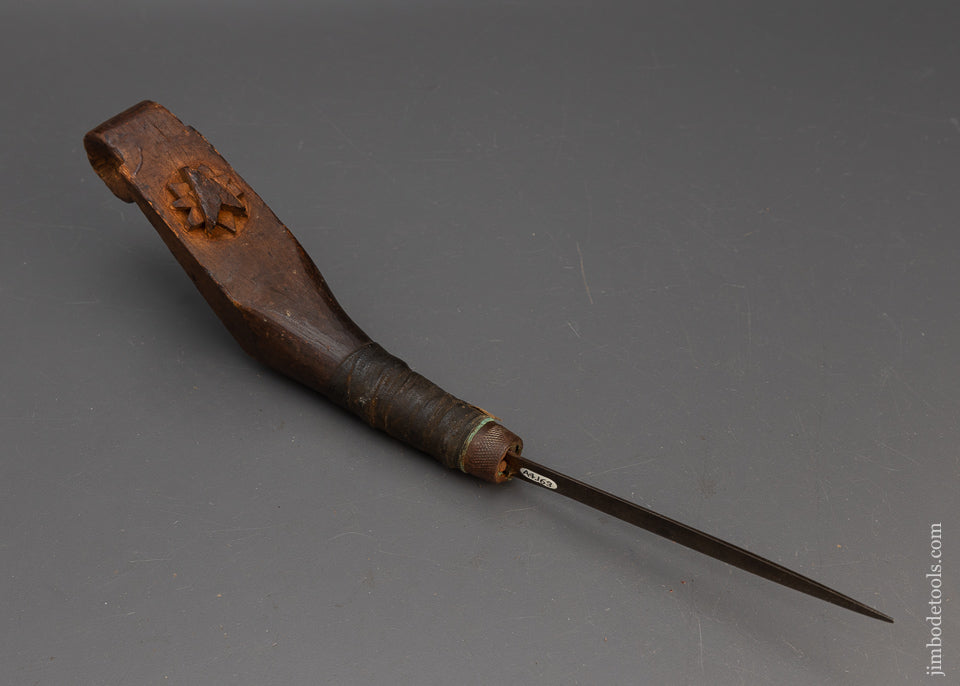
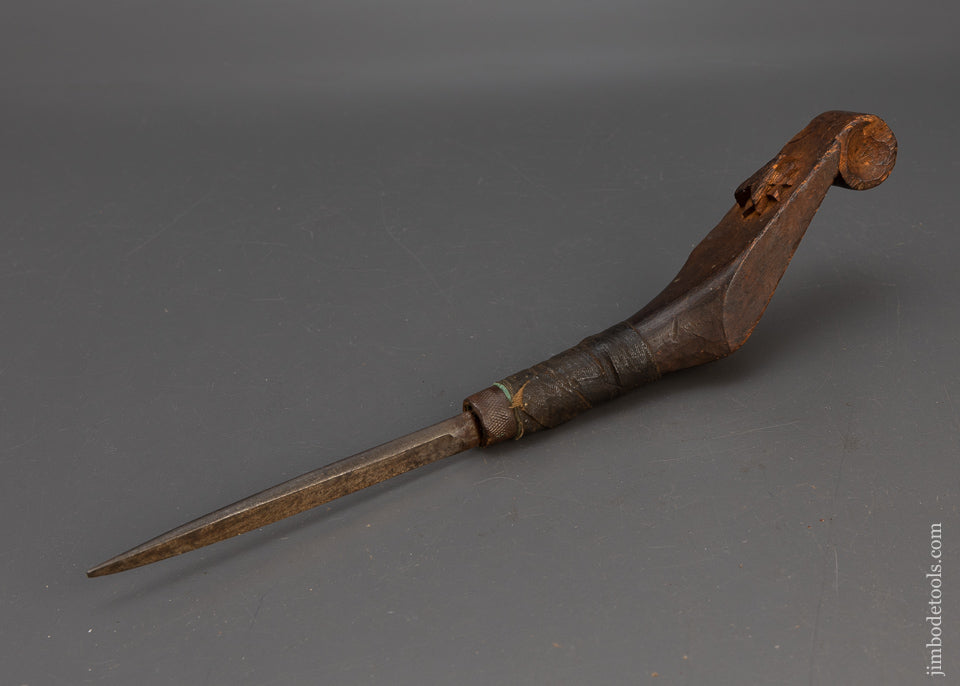
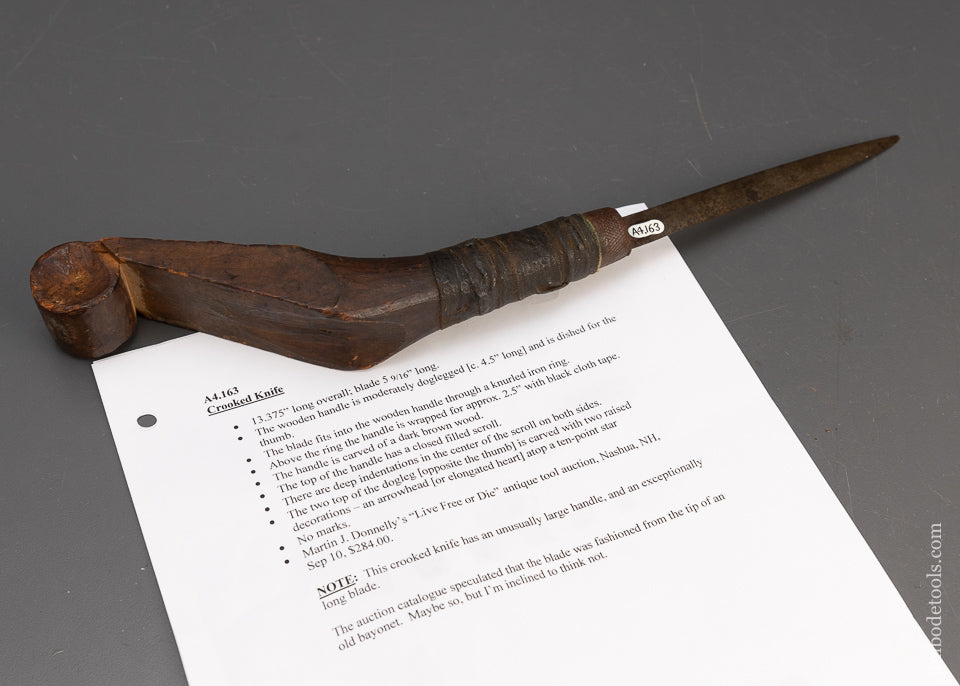
13 1/4 inches long. The origin of the crooked knife dates back to the 17th century North America. Henry David Thoreau wrote in 1848 "I suspect that it was made according to an aboriginal pattern" referring to a crooked knife being used by an Indian to fashion a canoe paddle. He had reported that he had seen other native Americans as well as white woodsmen using them. The crooked knife was used in the wilderness as a lightweight one handed drawknife. A tool that could accomplish almost any woodworking need. These knives were generally made by Native Americans and used by loggers as one hand drawshaves for axe handles, etc. Woodland Indian/Northeastern Woodlands carved or inspired mocotaugan (the knife) or crooked knives as they are known more commonly, were an indispensable survival tool. They are known as one of the most significant of all material objects known today from the history of native North Americans. More than 60 native tribes occupied the woodlands when Europeans first arrived thus these knives are known by many names and subject to design variations. The Penobscot had at least four names for these knives, while the Micmac used the word, "Wahawknigan". Captain John Gyles, writing of his captivity about 1696 by the Maliseet Indians in Maine observed, "the crooked knife was part of every man’s equipment”. Part of a collection of over 100 crooked knives we have obtained and will be posting daily for months to come.
